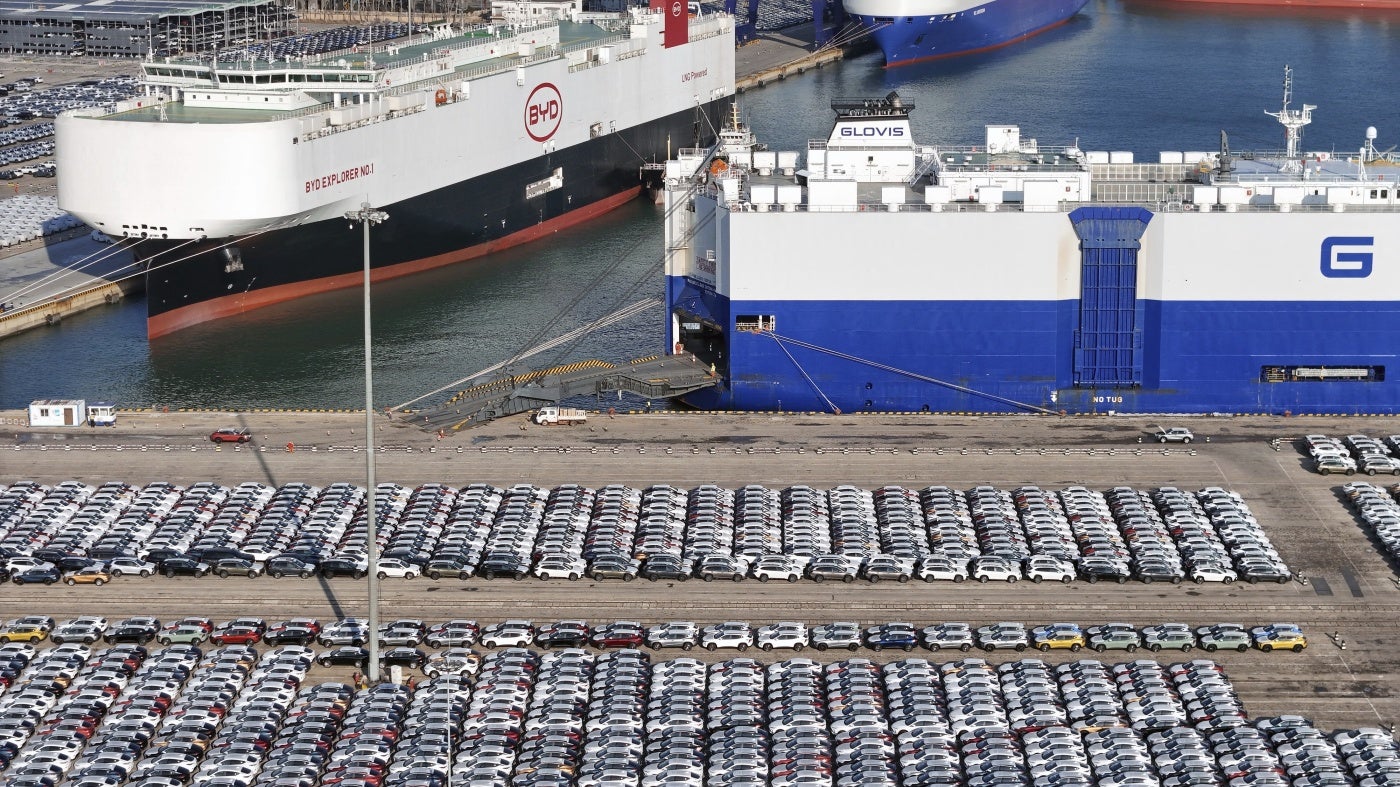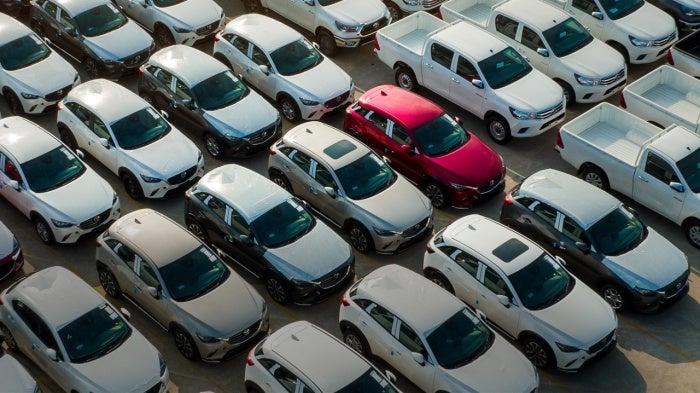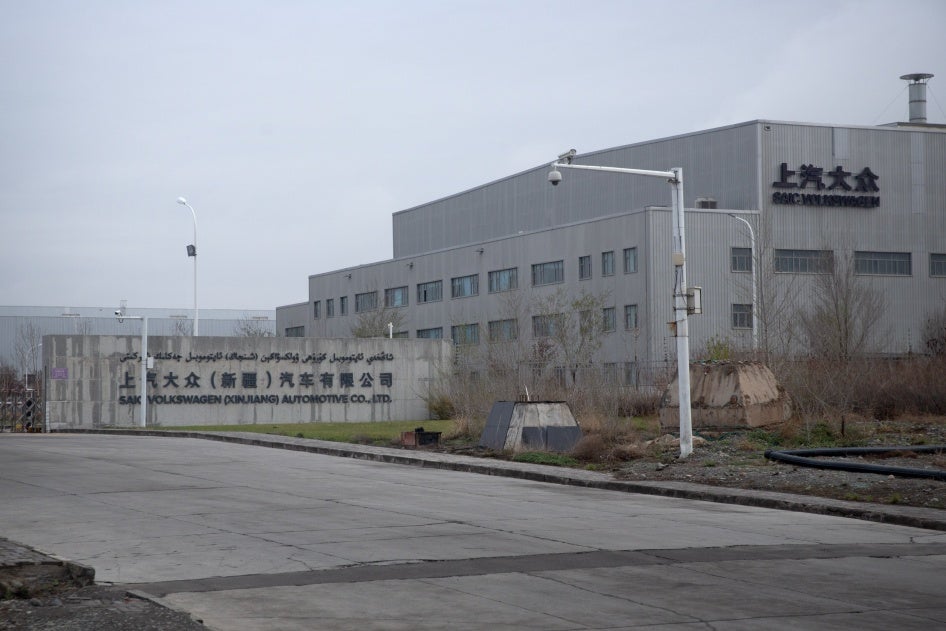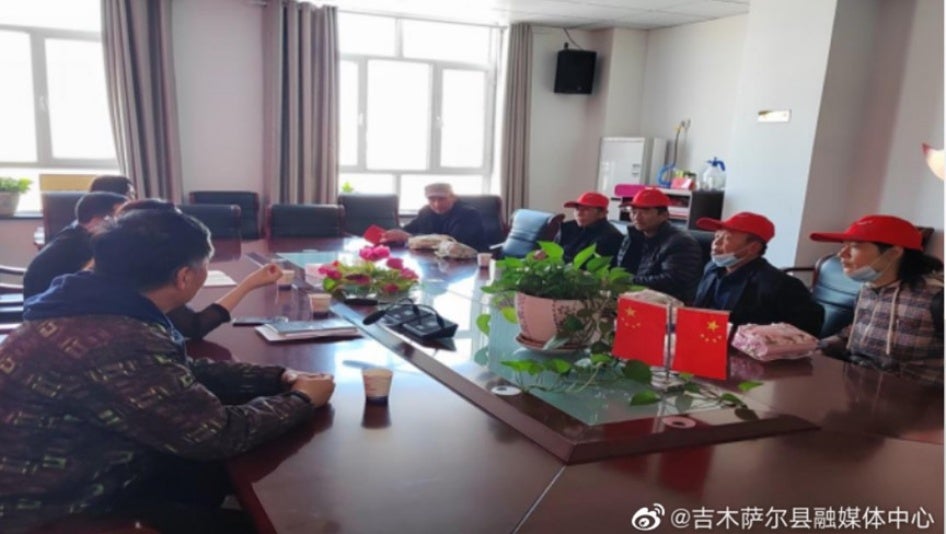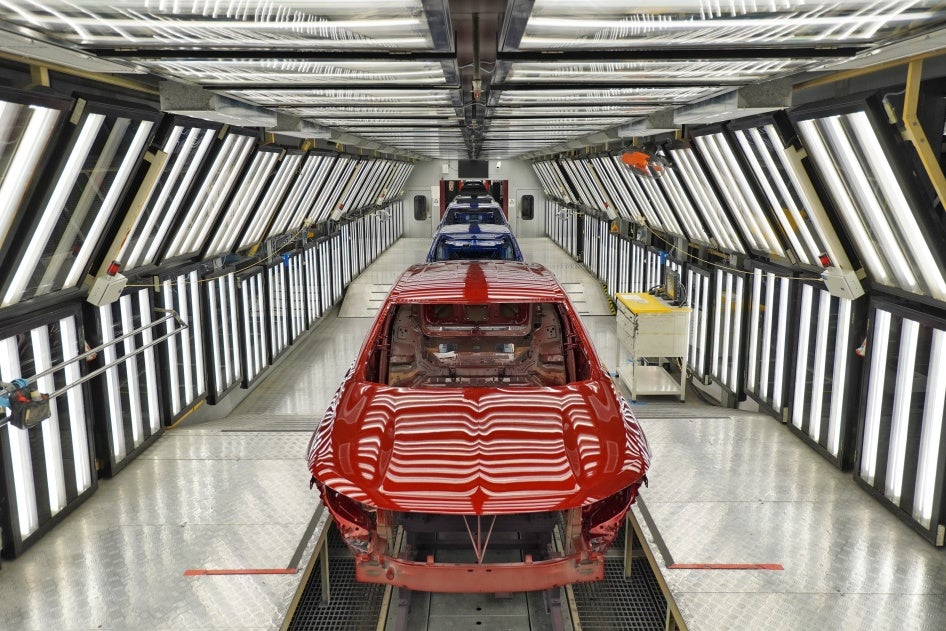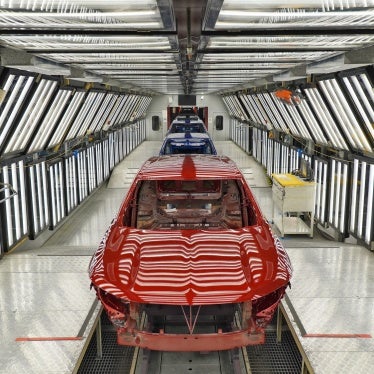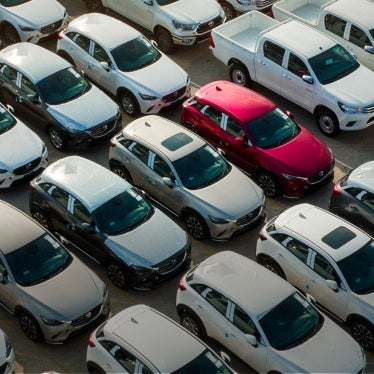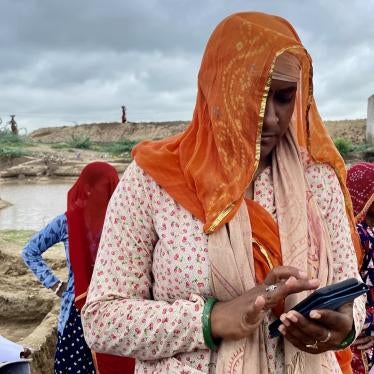Many major car companies know the risks, yet a Human Rights Watch report released last month showed that these companies – including General Motors, Volkswagen, Tesla, BYD and Toyota – failed to adequately tighten controls over their supply chains to eradicate forced labor-tainted aluminum. Why? China is more than an automotive manufacturing powerhouse, it’s also the world’s biggest market for car sales, and manufacturers fear jeopardizing their ability to make and sell cars in China by crossing its government. They also fear reprisals from the government for investigating links to forced labor. This can make car companies complicit in serious human rights violations. Senior Web Producer Paul Aufiero spoke with Senior Researcher and Advocate Jim Wormington and Human Rights Watch’s open-source investigative researcher (name withheld) about how they linked forced labor in China to car companies, as well as the report’s impact.
The report came out a month ago. How have you used it to push our advocacy since its launch?
Jim Wormington (JW): In the European Union, EU institutions are finalizing a new law prohibiting imports and exports linked to forced labor. We’ve been sharing our report with EU parliamentarians and policymakers to underscore why this law is vital to combat government-run forced labor programs, like the abuses Uyghurs are suffering in Xinjiang.
US lawmakers and customs officials are also closely scrutinizing the car industry. US Senator Ron Wyden, who chairs the Senate Finance Committee, told the media that his committee’s inquiry into car companies’ links to forced labor had so far reached conclusions like our own. We’d like the US Senate to hold a public hearing to ask car companies’ leadership how they are addressing the industry’s links to forced labor in China.
Open-Source Researcher (Researcher): Also, a German newspaper reported that a contractor hired by a subsidiary of a Volkswagen-Chinese joint venture, SAIC-Volkswagen, employed Uyghurs from government-backed labor transfer programs during construction of a car testing track in Xinjiang in 2017 and 2018.
Volkswagen said in response that, “Volkswagen is currently in talks with the non-controlled joint venture SAIC-Volkswagen about the future direction of business activities in Xinjiang province. Different scenarios are being considered intensively."
We believe Volkswagen’s joint venture should close its subsidiaries’ facilities in Xinjiang and that Volkswagen should exercise much closer control over how the joint venture addresses human rights risks in China.
What had the report uncovered?
JW: The report explained how the entire aluminum supply chain risks complicity in forced labor in China’s northwestern region of Xinjiang. Almost 10 percent of global aluminum flows from Xinjiang into wider supply chains, including into cars and car parts.
We spent months corresponding or meeting with the car companies and analyzing their responses – or lack thereof – to these clear risks of forced labor. We uncovered that, despite knowing the risk of forced labor in Xinjiang, some carmakers apply weaker responsible sourcing and human rights standards at their Chinese joint ventures than in their global business. This increases the risk of complicity in forced labor.
All the carmakers we spoke to have done too little to map their aluminum supply chains and identify possible links to forced labor.
Xinjiang produced six million tons of aluminum in 2022. What does the supply chain look like?
Researcher: It’s complex. First, companies mine earth for the ore, known as bauxite, needed to produce aluminum. Much of China’s bauxite comes from Guinea, a West African country where communities see little benefit from mining. The bauxite is then shipped to China, off-loaded at the coast, processed into alumina, and sent via railroad to Xinjiang, thousands of miles away.
Why Xinjiang? In order to cement its hold on the borderland, and to integrate the Uyghurs, the Chinese government has made Xinjiang a hub for heavy industry, including aluminum production. Xinjiang is rich in cheap coal, which powers the electricity needed to smelt aluminum.
The aluminum produced in Xinjiang is then shipped back toward coastal cities, processed into other products, and eventually made into parts for car manufacturing and other industries. Once aluminum has been melted outside Xinjiang and mixed with other materials, it is impossible to determine whether or how much of it came from Xinjiang, enabling tainted aluminum to enter domestic and global supply chains undetected.
What type of forced labor is being used in Xinjiang’s aluminum industry?
Researcher: The Chinese government has long orchestrated a campaign of repression in Xinjiang, committing crimes against humanity including arbitrary detention, forced disappearances, and cultural and religious persecution.
The forced labor we’re discussing in the aluminum industry centers on government-backed “labor transfer” programs, which coerce Uyghurs and other Turkic Muslims into jobs in Xinjiang and other regions.
Authorities go house-to-house in rural areas to find people for the transfers and then ship them off to various workplaces such as factories. The government separates these people from their families and communities, then subjects them to grueling work hours and mandatory political indoctrination in the name of “poverty alleviation.”
A lot of your research was conducted through open-source investigations. How does that work?
Researcher: Chinese government restrictions mean that in-person research on forced labor within Xinjiang isn’t possible. This means our reporting relied heavily on open-source, online research. We analyzed media articles, social media posts, company reports, government statements and other online resources. It was painstaking work, and we poured over tens of thousands of pages, often hidden in obscure corners of the internet.
We were looking for evidence of the aluminum industry’s participation in labor transfers. Because labor transfers are a Chinese-government program, company and government articles sometimes promote companies’ participation in the transfers as a form of propaganda. We collated and analyzed these statements to find evidence of companies’ participation in labor transfers.
In one case, for example, one of Xinjiang’s biggest aluminum producers, East Hope Group, stated on its website in March 2020 that it had “received 235 ethnic minority employees from southern Xinjiang,” including in its electrolytic aluminum department. Southern Xinjiang is where the region’s Uyghur population is concentrated.
The article on East Hope Group’s website also described the training received by the labor transfer workers, including efforts to teach them Mandarin Chinese and address perceived problems in education levels. Political indoctrination and mandatory language lessons are a part of the government’s efforts to control Uyghurs and integrate ethnic communities into majority Han culture.
In the end, we were able to find articles like this, as well as other corroborating evidence, for most of the aluminum producers operating in Xinjiang.
We also investigated how materials moved through the supply chain – who is selling what to whom – to show the connections between the car industry and Xinjiang’s aluminum.
What did you find?
Researcher: In addition to the links between Xinjiang’s aluminum producers and forced labor, we also found evidence that the coal mines in Xinjiang that supply the aluminum industry have participated in forced labor. For example, we found a 2020 report from Xinjiang Energy (Group), a state-owned energy company, that provided a glowing account of the life of one labor transfer worker, praising the company’s efforts to tackle his homesickness and separation from his family. Company and government propaganda often portrays labor transfers as benefitting Uyghurs, downplaying the Chinese government’s abusive treatment of Uyghurs in Xinjiang, as well as evidence of coercion in the labor transfer program itself.
We also found some interesting evidence about the role of commodities traders – companies that buy commodities to sell on to other companies – creating additional layers between Xinjiang and global carmakers. Tianshan Aluminum, for example, an aluminum smelter in Xinjiang with close ties to the Chinese paramilitary organization the Xinjiang Production and Construction Corps (XPCC), sells materials to some of the world’s biggest traders – companies like Glencore and Trafigura, which buy raw materials and sell them to other companies. The trading of Xinjiang’s aluminum further obscures the links between Xinjiang and global supply chains.
What challenges did you come across in your research?
Researcher: There were many challenges. You can’t use Chinese social media unless you have a Chinese phone number, which requires government-issued identification. So we figured out ways to circumvent this. Also, Chinese social media blocks certain search terms, such as the Chinese word for labor transfer, so we had to be creative.
Some aluminum companies also redact or hide information, especially as forced labor in Xinjiang comes under more international scrutiny. Some company documents published before the 2022 entry into force of the Uyghur Forced Labor Prevention Act in the United States listed useful information to trace the company’s transactions and customers. But after the law entered into force, further restricting imports from Xinjiang, companies increasingly omitted such incriminating information.
What role does the car market play in how companies operate in China?
JW: China is the world’s biggest auto market, and companies like Volkswagen, GM, and Tesla want to maintain access to that market. Meanwhile, China’s own car brands, like BYD, are growing rapidly and taking market share from companies based in Europe and Asia, particularly in the electric vehicle market. The competition is stiff.
When we ask carmakers about what it's like doing business in China, they say they fear reprisals from the Chinese government if they ask their suppliers to investigate any links to forced labor in Xinjiang. Over the past few years, the government has detained individuals and threatened firms who have sought to investigate supply chain links to Xinjiang. This fear is increasing as the government recently revised its counter-espionage law and has taken an increasingly expansive view of what it considers to be spying—which is vaguely defined to include any kind of data collection.
There is a big contradiction between the Chinese government's ambition to be a huge player in the global car industry, and the government’s hostility to criticism of its repression in Xinjiang and elsewhere, considering the human rights and responsible sourcing standards that many consumers and governments want to see businesses applying.
How did car companies respond when confronted with these findings?
JW: We contacted some of world’s biggest car companies, both traditional carmakers like GM, Volkswagen, and Toyota and newer brands, focused on electric vehicles, like Tesla and BYD. All have a massive China presence, both manufacturing and selling cars in China and using China as a source for key materials and parts. Toyota and BYD didn’t respond to several attempts to contact them. But GM, Volkswagen, and Tesla did.
GM gave us a boilerplate answer about how it is trying to address supply chain abuses, but it did not provide nearly enough detail regarding its oversight of its business in China or its efforts to eliminate forced labor in its aluminum supply chain, which raises concerns. Like many companies, GM operates in China through joint ventures with other Chinese companies.
Volkswagen also operates in China through joint ventures. Company representatives asserted that Germany’s law requiring companies to respect rights in their supply chains doesn’t apply to their Chinese operations, because joint ventures are run by Chinese partners. But Volkswagen still has significant influence over its Chinese joint ventures and should use it.
Finally, Tesla provided the most detailed response to our inquiry, saying it had mapped portions of its supply chain and found no forced labor. But since aluminum can be found in so many car parts, and accurately mapping the supply chain requires tracing the aluminum found in each separate part, we asked Tesla how much of its aluminum supply chain it had mapped. The company hasn’t yet answered that question.
What still needs to happen?
Researcher: We want these labor transfer programs to stop, and we hope that can be achieved by increasing pressure on companies both operating in Xinjiang and sourcing from the region. Carmakers can contribute to that effort by making sure their own supply chains are free from Xinjiang-manufactured aluminum.
JW: Car companies need to ensure that they aren’t directly or indirectly sourcing aluminum from Xinjiang. Some car companies are already taking steps to exclude material from the region, but the whole industry needs to step up to ensure it’s not complicit in forced labor. Car companies need to push the aluminum industry and their suppliers to be more transparent and to credibly document the origin of their aluminum. Moving away from aluminum produced by coal and investing in renewable energy is also a way to exclude material from Xinjiang while also reducing the carbon footprint of aluminum production.
As we look ahead, we’ll be continuing our work on forced labor in Xinjiang – pushing for governments to hold companies accountable for sourcing products linked to forced labor and for companies to take the steps they need to end any links to Xinjiang. Consumers shouldn’t have to tolerate cars containing materials or parts made with forced labor.
